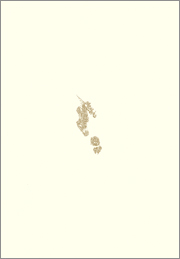
The Bosco di Sant’Antonio
The International Carlo Scarpa Prize for Gardens, 2012
XXIII International Carlo Scarpa Prize for Gardens
edited by Domenico Luciani and Patrizia Boschiero, with Francesco Sabatini
Fondazione Benetton Studi Ricerche
Treviso 2012
192 pages
81 illustrations in colour and 19 black and white.
Are available Italian and English editions
(Italian edition)
ISBN 978-88-97784-12-8 (English edition)
(series Memorie/dossier)
Our efforts were directed at trying to understand the form and life of a place. To provide an account of its interminable geological and biological existence, a history of the transformations wrought by human hand, of the life-threatening risks that repeatedly loomed over it during the XX century and of the battles fought to ensure its protection.
We tried to ponder its present state and contemplate its future prospects. So we published archival documents, studies by scholars and statements by those responsible for the woods, a wide range of complex but usefully comparable positions, maintaining constant reference to the unifying cultural inspiration of the International Carlo Scarpa Prize for Gardens.
The publication is therefore the result of scrupulously scientific work and editorial effort with important contributions.
This marvellous place comprises several thousand large trees, five hundred of which are ancient beech trees, woodland pasture (bosco difesa) covering about a hundred hectares not far from Pescostanzo in the mountains of Abruzzo. It is a living testimony to an agricultural-sylvan-pastoral civilization moulded directly by its relationship with nature, with its own historical and spiritual dimensions. A crucible of knowledge, technical skills, arts, crafts, rules and practices born of long tradition but presenting us with economic and anthropological questions that are crucially relevant to our own time.
Starting from this particularly exceptional case, the focus widens to explore the general subject of woods and their nature as symbolic landscapes, their changing meaning and role in the arduous attempts at reconciliation with nature that our current sensibility seems, if for no other reason than to survive, to have embarked on. With their variety of character and use and their long-standing value as statutorily regulated common property, woods present us with a simple explanation of how their conservation and their renewal presupposes constant care and maintenance and far-sighted community stewardship.
Contents
Premio Internazionale Carlo Scarpa per il Giardino 1990-2012, 4
Regolamento e giuria del premio, 5
Bosco di Sant’Antonio. Motivazione della giuria, 8
Jury report, 10
Testimonianza di Pasquale Del Cimmuto, sindaco di Pescocostanzo, 19
Boschi e pascoli, prati e coltivi del Comune di Pescocostanzo, a cura di Domenico Luciani, 21
Luigi Hermanin, Il Bosco di Sant’Antonio, 25
Mauro Agnoletti, Caratteristiche e stato di conservazione del paesaggio storico italiano, 30
Gianfranco Pirone e Giampiero Ciaschetti, La vegetazione del Bosco di Sant’Antonio, 33
La protezione del Bosco di Sant’Antonio nel Parco Nazionale della Majella, a cura di Simonetta Zanon, 42
Aurelio Manzi, Le antiche difese e l’uso dei boschi nell’Appennino abruzzese, 44
Francesco Sabatini, Pescocostanzo: un sistema complesso, tra natura e cultura, 57
Inventario della chiesa di Sant’Antonio in Primo Campo (1697), testo edito da Gaetano Sabatini nel 1932, a cura di Ezio Mattiocco, 68
Ezio Mattiocco, Le Campora: una terra contesa, 72
Massimo Rossi, Il Bosco di Pescocostanzo da “Difesa” a “Bosco di Sant’Antonio”, 79
Regesto del Bosco di Sant’Antonio nel XX secolo, a cura di Domenico Luciani, 89
Bibliografia consultata, 97
Cartografia disponibile, 106
Elenco delle illustrazioni, 107
Premio Internazionale Carlo Scarpa per il Giardino 2012, 108
